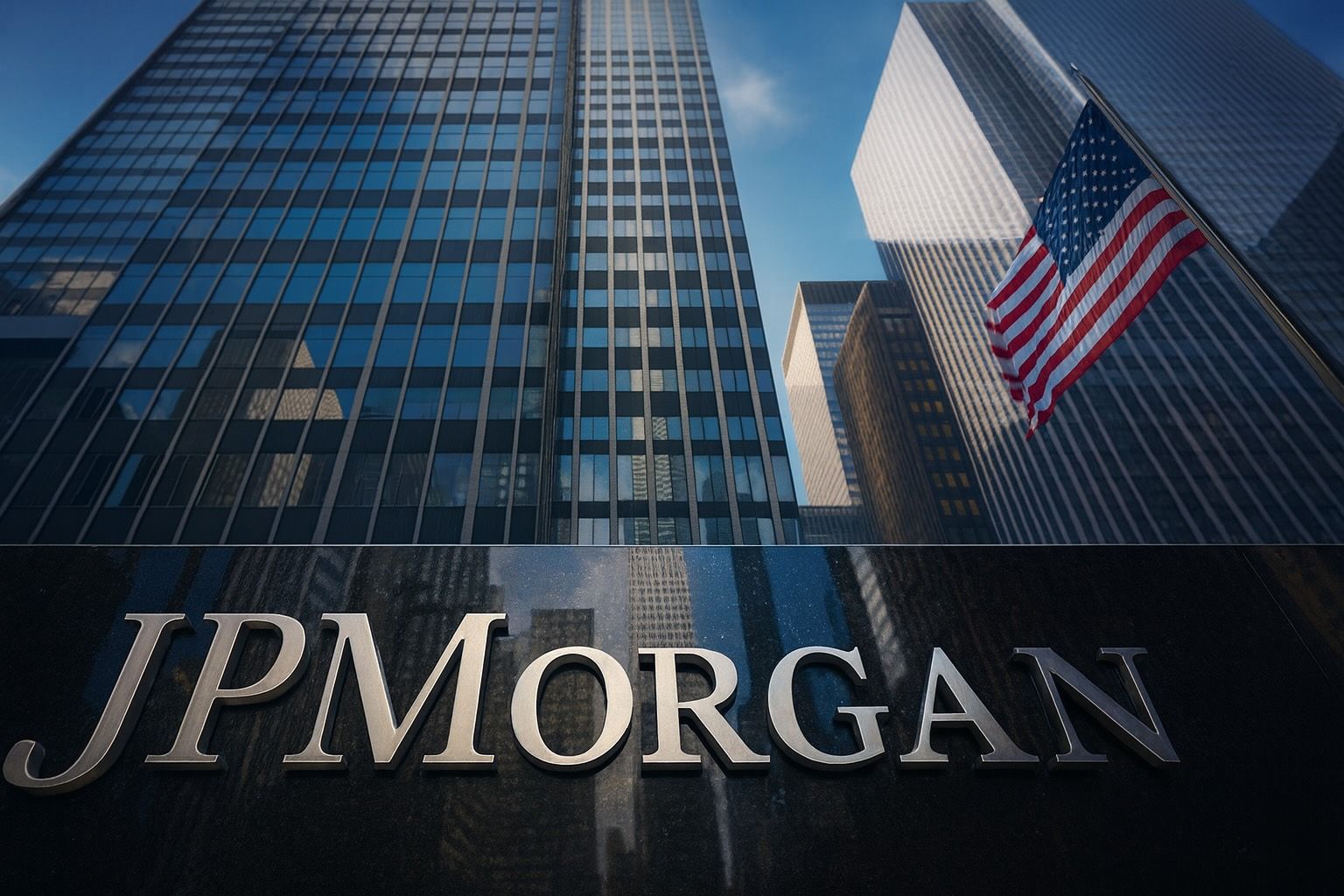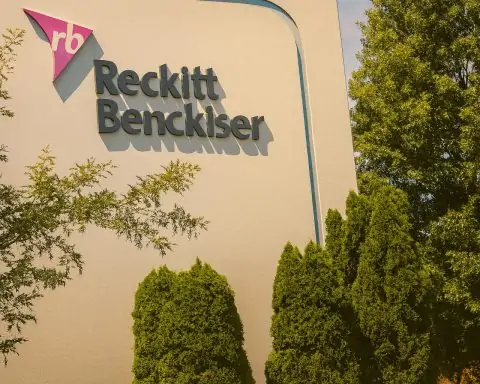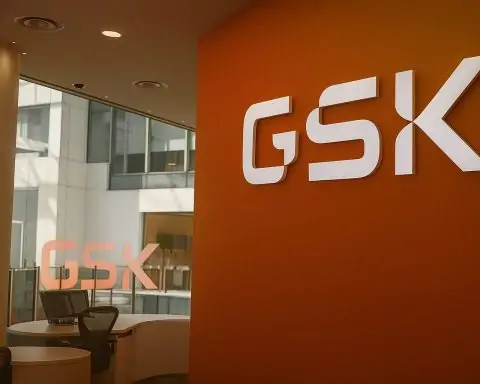- Dimon’s warning: JPMorgan Chase CEO Jamie Dimon told the BBC on Oct. 9 that he sees roughly a “30%” chance of a serious US stock market crash within the next 6–24 months – far above the ~10% correction most investors have priced in [1] [2]. Dimon cited “geopolitical tensions, fiscal spending, global remilitarization” and other uncertainties as causes for alarm [3] [4].
- AI-fueled highs: US equities have been on a tear in 2025. The S&P 500 and Nasdaq have repeatedly hit all-time highs, up roughly 11–15% year-to-date [5] [6]. The rally has been driven by a handful of mega-cap tech and AI stocks (the 10 largest S&P companies now account for ~40% of its market value [7]). But high valuations – and talk of an “AI bubble” – have many experts uneasy. Dimon himself noted that “some of the money being invested in AI will probably be lost,” even though he still believes in the long-term promise of the technology [8] [9]. The Bank of England and OpenAI’s Sam Altman have similarly warned of frothy market conditions and a potential sudden correction [10] [11].
- Recent selloff: The risks were underscored on Oct. 10, when President Trump revived rare-earth and tariff threats against China. US indexes plunged: the S&P 500 fell about 2.7% and the Nasdaq about 3.6% (its worst drop since April) [12] [13]. Blue-chip tech names were hit hardest – Nvidia lost ~5%, AMD ~7.8% and Amazon ~5% on the day [14] – wiping out recent gains. TechStock² reports that the Nasdaq had actually hit a fresh intraday record on Oct. 10 before reversing sharply after Trump’s announcement (100% tariffs on Chinese exports) [15] [16]. Investors called the move “significant”: as Cetera CIO Gene Goldman put it, with stocks “priced for perfection…[this] adds uncertainty to economic growth” [17]. Ocean Park’s James St. Aubin allowed it “could warrant a pullback,” though he noted it may not derail the overall AI-led rally [18].
- Safe havens spike: In contrast to plunging stocks, safe‐haven assets have rallied. Gold surged past $4,000 per ounce – an all-time high – in early October [19], as traders flocked to hedges amid uncertainty (its price jumped over 50% in 2025 alone [20]). Global bond yields slipped (10‐year Treasuries fell from ~4.14% to ~4.06% on Oct. 10 [21]). Bitcoin and crypto also roared higher during the summer’s risk-on mood: Bitcoin briefly hit ~$125,000 on Oct. 5 (and Ether ~$4,879) on massive ETF inflows [22]. But when the trade war news hit, crypto collapsed too: a historic $19 billion of leveraged crypto positions were liquidated on Oct. 10 as BTC plunged back toward ~$105K and Ether gave back much of its gains [23].
- Fed and policy: Monetary policy outlook remains a wild card. Investors now overwhelmingly expect further Fed cuts in late 2025 – markets are pricing in another 25 bp cut in October (95% odds) and one in December (80% odds) [24]. The Fed’s Sept. policy minutes noted growing concern about a slowing labor market (justifying rate cuts) even as inflation was “stubborn” [25]. Trump’s rhetoric (criticism of Fed Chair Powell, threats to fire officials) adds to uncertainty, but Dimon emphasized that he remains “confident in the Fed’s independence” despite those pressures [26].
- Earnings and the economy: With the U.S. government shutdown delaying jobs, CPI and other data, Wall Street will get its next big clues from Q3 corporate earnings. This week kicks off “the most important event of 2025” – results from JPMorgan, Goldman Sachs, Wells Fargo and others [27] [28]. Analysts expect roughly +8.8% S&P 500 profit growth in Q3 [29] [30], fueled by booming dealmaking and trading. Banks have signaled consumers are still paying bills (low delinquencies) but loan growth is static [31] [32]. As BCA’s Irene Tunkel notes, banks “are a window into the U.S. economy” – if lending and spending pick up, it argues against a downturn [33] [34]. But investors warn that any cracks in earnings or guidance could quickly reverse sentiment. Horizon Investment’s Chuck Carlson warns bluntly: “A lot of the bullishness is built around the expected earnings growth…if we start to see cracks in that, that would not be good for the market” [35] [36].
- Current market levels: Stocks remain near record highs but are volatile. The S&P 500 closed around 6,760 on Oct. 9 [37] (up ~11% YTD [38]). The Nasdaq Composite has been above 29,000. JPMorgan’s stock (JPM) now trades near ~$300, with analysts’ 2025 target around $314 [39]. Nvidia (NVDA) is about $180–185 (one-year consensus target ~$221 [40]). Tesla (~$411) and Amazon (~$216) are trading below their early‐Oct highs after this week’s drop (reflecting tariffs and cost pressures [41]).
- Expert forecasts: Strategists are split. Some (like Natixis’s Garrett Melson) still see momentum: “the market just keeps grinding higher… the fundamentals continue to look good” [42], given healthy corporate profits. Others sound the alarm. Hedge-fund legend Paul Tudor Jones (via Bloomberg/Independent) has joined Dimon in warning of excess, saying “all the ingredients are in place” for a bubble akin to 1999 [43]. Morgan Stanley’s Ebrahim Poonawala also notes banks’ advantage – but says the market will quickly punish any sign of waning strength [44]. With the Fed likely easing by year’s end and earnings mostly supportive, some analysts still expect modest further gains through 2025. However, most counsel caution. The consensus 2025 outlook calls for single‑digit stock gains as economic growth slows (S&P Global Economics sees sub‑2% U.S. GDP growth). Crucially, a correction or crash would depend on any shock to valuations: if profit growth slows more than expected or geopolitical conflicts worsen, broad markets could fall sharply.
Forecast: In short, the bull run may have farther to go if earnings remain strong and monetary conditions stay loose. But risk is asymmetric: “everything is priced for perfection,” as one investor put it [45], so the next bad news could trigger a rapid downturn. Investors are advised to monitor earnings closely, watch interest-rate signals, and diversify into safe havens or defensive sectors. As Dimon warned, the odds of a big drop are “higher than what I think is priced in the market” [46] – so prudent risk management is key in these turbulent times.
Sources: Recent news and analysis from The Guardian, Reuters, TS2.tech, Investopedia, Bloomberg/Independent, and others [47] [48] [49] [50] [51] [52]. (Stock prices and targets from public market data and analyst consensus [53] [54].)
References
1. www.theguardian.com, 2. www.inkl.com, 3. www.theguardian.com, 4. www.reuters.com, 5. www.reuters.com, 6. www.inkl.com, 7. www.inkl.com, 8. www.theguardian.com, 9. www.inkl.com, 10. www.theguardian.com, 11. www.inkl.com, 12. www.reuters.com, 13. www.investopedia.com, 14. www.investopedia.com, 15. ts2.tech, 16. www.reuters.com, 17. www.reuters.com, 18. www.reuters.com, 19. ts2.tech, 20. ts2.tech, 21. www.investopedia.com, 22. ts2.tech, 23. ts2.tech, 24. ts2.tech, 25. ts2.tech, 26. www.reuters.com, 27. ts2.tech, 28. ts2.tech, 29. ts2.tech, 30. www.reuters.com, 31. ts2.tech, 32. ts2.tech, 33. ts2.tech, 34. www.reuters.com, 35. ts2.tech, 36. www.reuters.com, 37. finance.yahoo.com, 38. www.reuters.com, 39. public.com, 40. www.tradingview.com, 41. www.investopedia.com, 42. www.reuters.com, 43. www.inkl.com, 44. ts2.tech, 45. www.reuters.com, 46. www.theguardian.com, 47. www.theguardian.com, 48. www.reuters.com, 49. www.reuters.com, 50. ts2.tech, 51. ts2.tech, 52. www.reuters.com, 53. public.com, 54. www.tradingview.com







